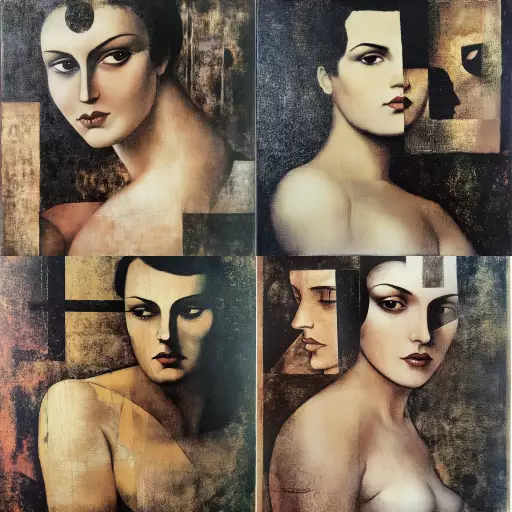Explore the Best AI Image Gallery

Beyond the Canvas: Wearable Tech and the Evolution of Creative Expression
The realm of creativity has always been a dynamic space, constantly evolving with advancements in technology. Today, wearable technology stands as a transformative force, pushing the boundaries of artistic expression and ushering in a new era of interactive experiences.
From augmented reality (AR) glasses that overlay digital elements onto the real world to haptic suits that translate vibrations into tactile sensations, wearable tech is providing artists with unprecedented tools to engage their audiences on a deeper level. This immersive technology transcends traditional art forms, allowing creators to sculpt soundscapes, manipulate light and color in real-time, and build interactive narratives that respond to the viewers movements and emotions.
The Creative Canvas Reimagined
Wearable tech is redefining the concept of the canvas. Artists are no longer confined to physical mediums; they can now utilize their bodies as canvases, incorporating movement, gesture, and even physiological data into their creations. Imagine a performance where dancers wear sensors that translate their movements into projected visuals, or an installation where viewers heartbeats influence the color palette of an evolving artwork.
Augmenting Reality, Enriching Experiences
AR, powered by wearable devices like smart glasses, overlays digital information onto our physical environment. In the realm of art, this opens up a world of possibilities. Museums can bring historical artifacts to life with interactive 3D models and audio guides. Street artists can transform urban landscapes with ephemeral digital installations that respond to passersby. Even everyday objects can become canvases for artistic expression through AR filters and lenses.
Ethical Considerations: Navigating the Uncharted Territory
As wearable tech permeates the creative landscape, its crucial to address the ethical implications. Data privacy becomes paramount when artists collect biometric data or track user interactions. The potential for manipulation and bias in algorithms used to generate art raises important questions about authorship and creativity. Its essential to establish guidelines and frameworks that ensure responsible and equitable use of this powerful technology.
The Future of Creativity: A Collaborative Playground
The future of creative expression lies in collaboration, where artists, technologists, and audiences converge to shape innovative experiences. Imagine a world where anyone can contribute to an evolving digital art piece, or where wearable tech empowers individuals with disabilities to express themselves creatively in new and profound ways. The possibilities are boundless.
Wearable technology is not merely a tool; its a catalyst for transformation. It empowers artists to push the boundaries of imagination, blurs the lines between reality and virtuality, and invites us all to participate in shaping the future of creative expression. As we venture into this uncharted territory, lets embrace the potential while navigating the ethical complexities with responsibility and foresight.